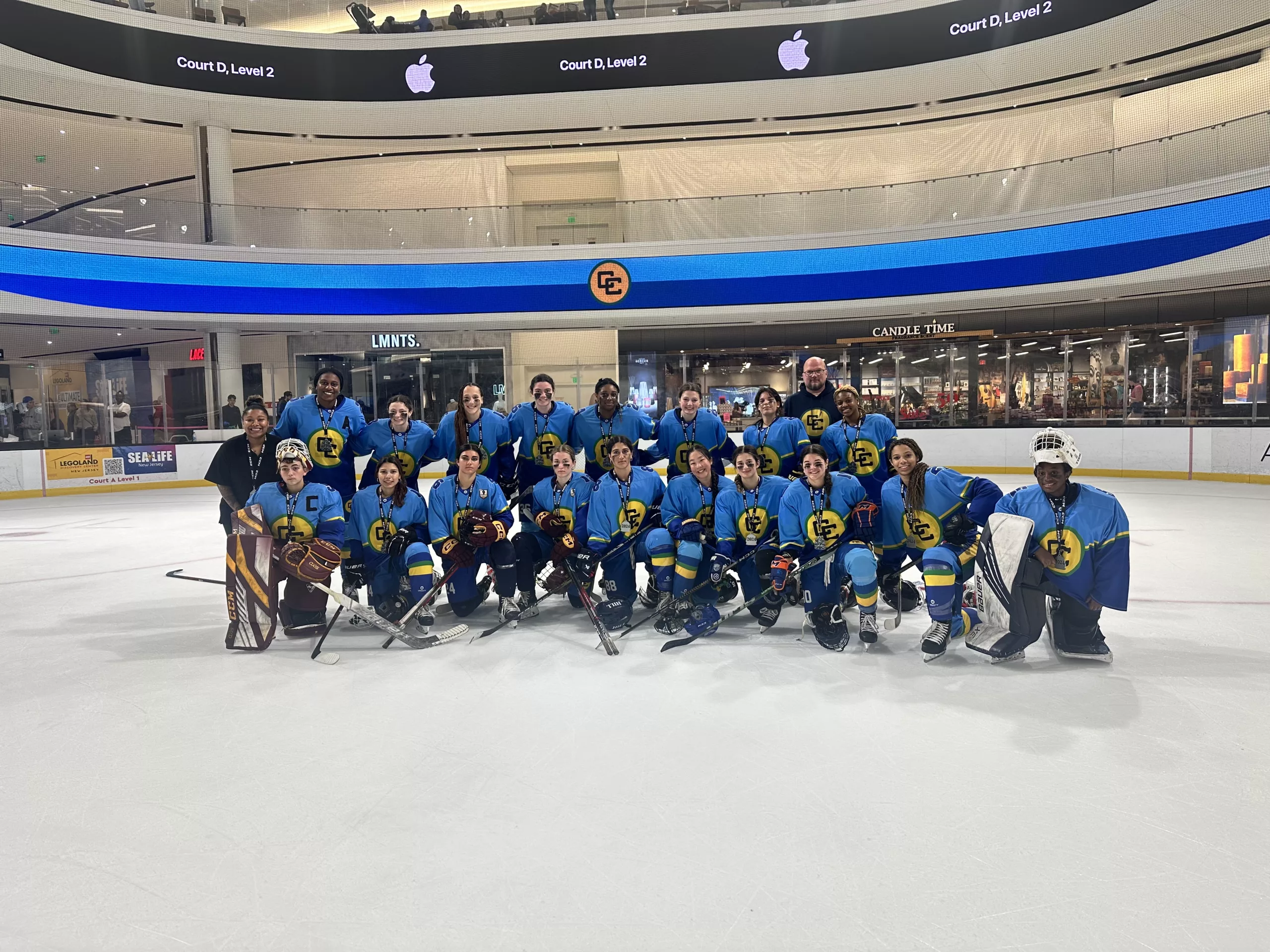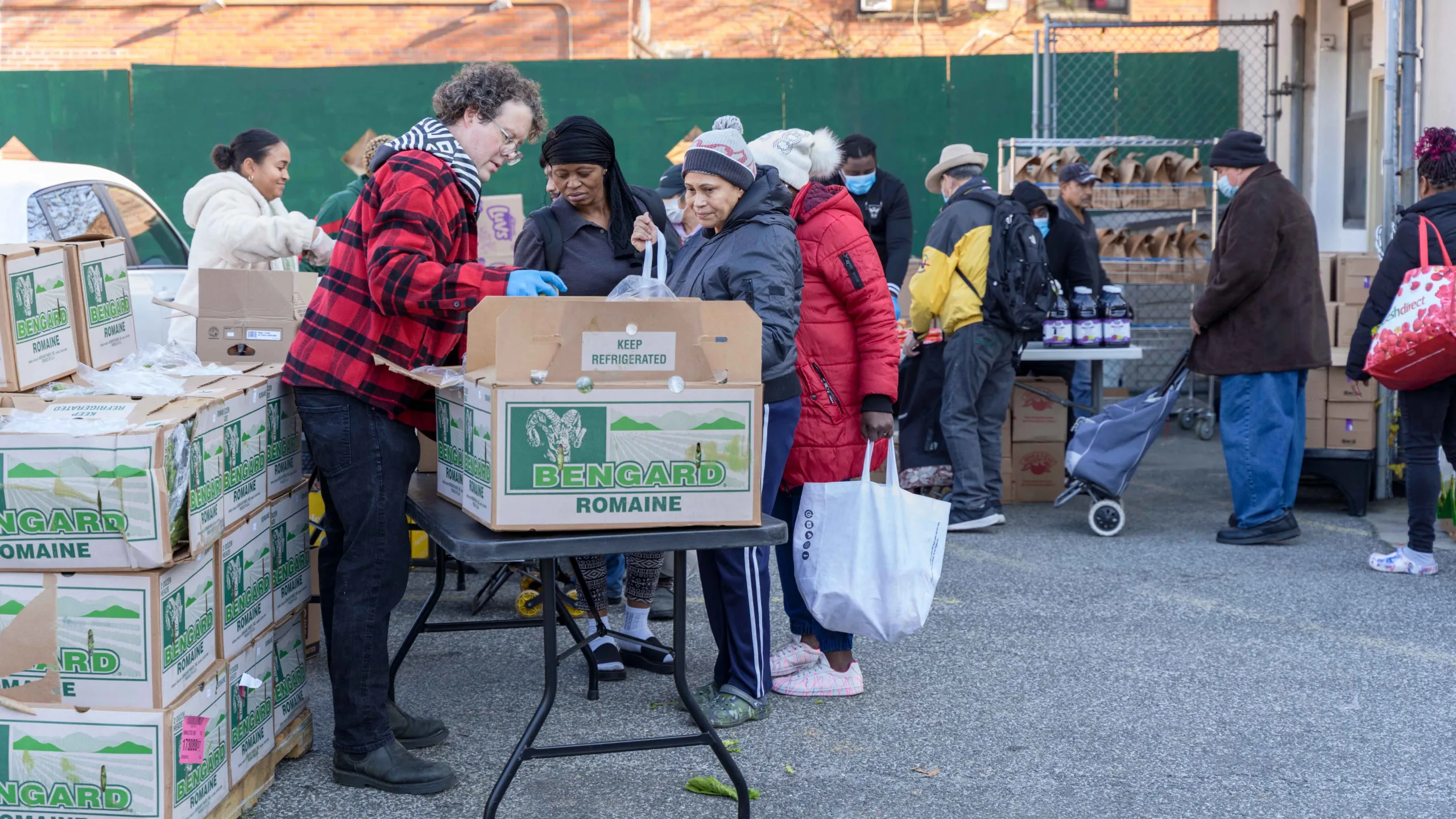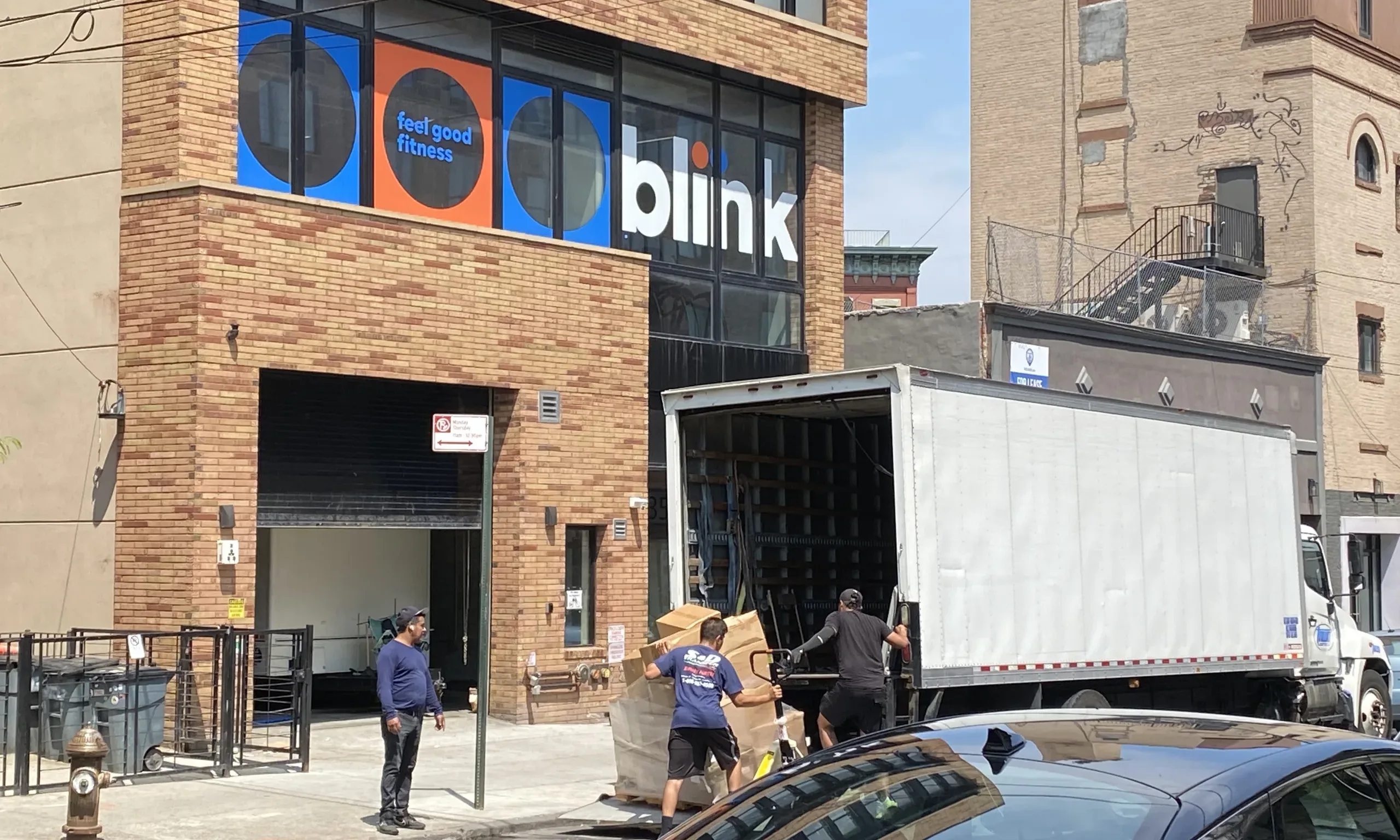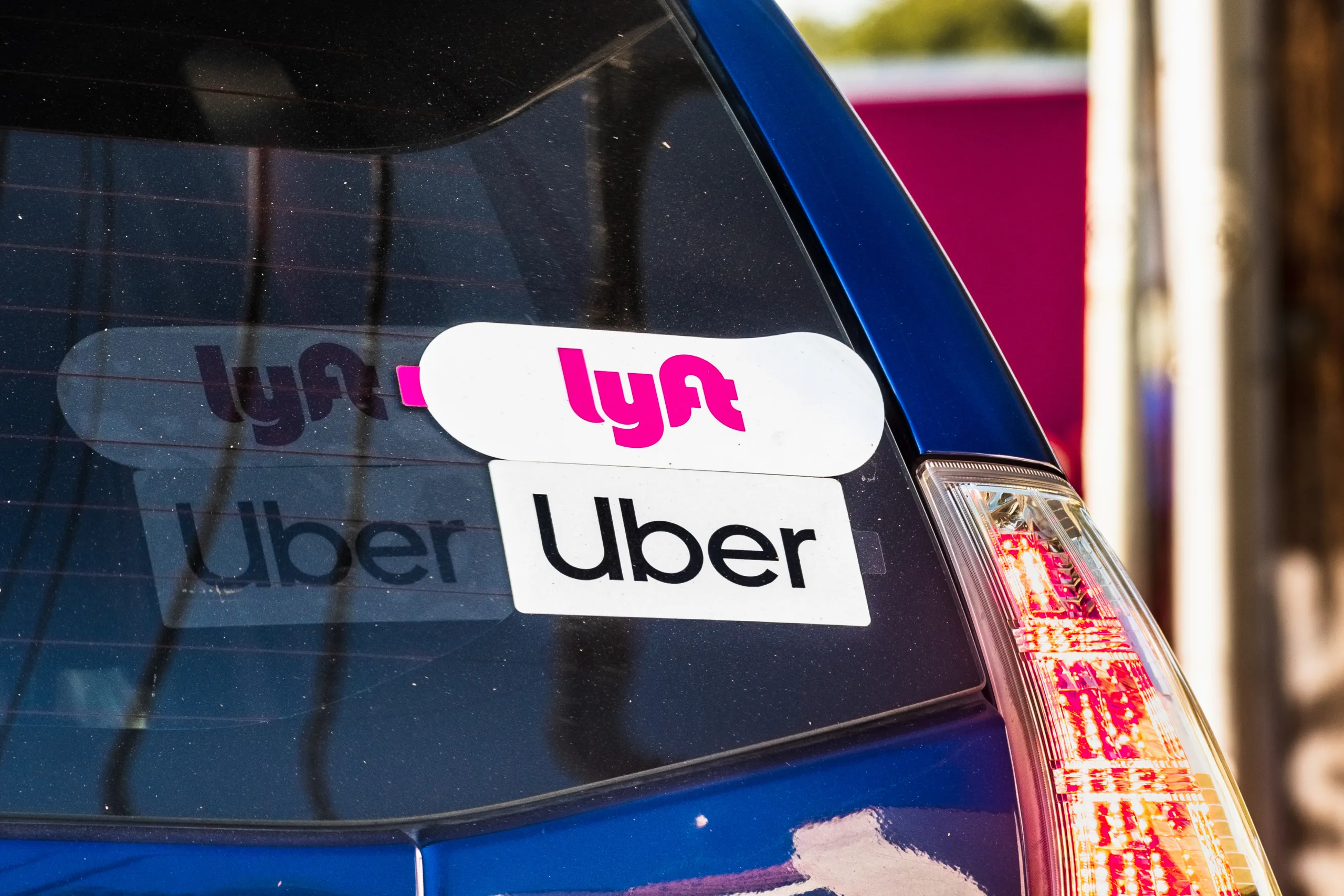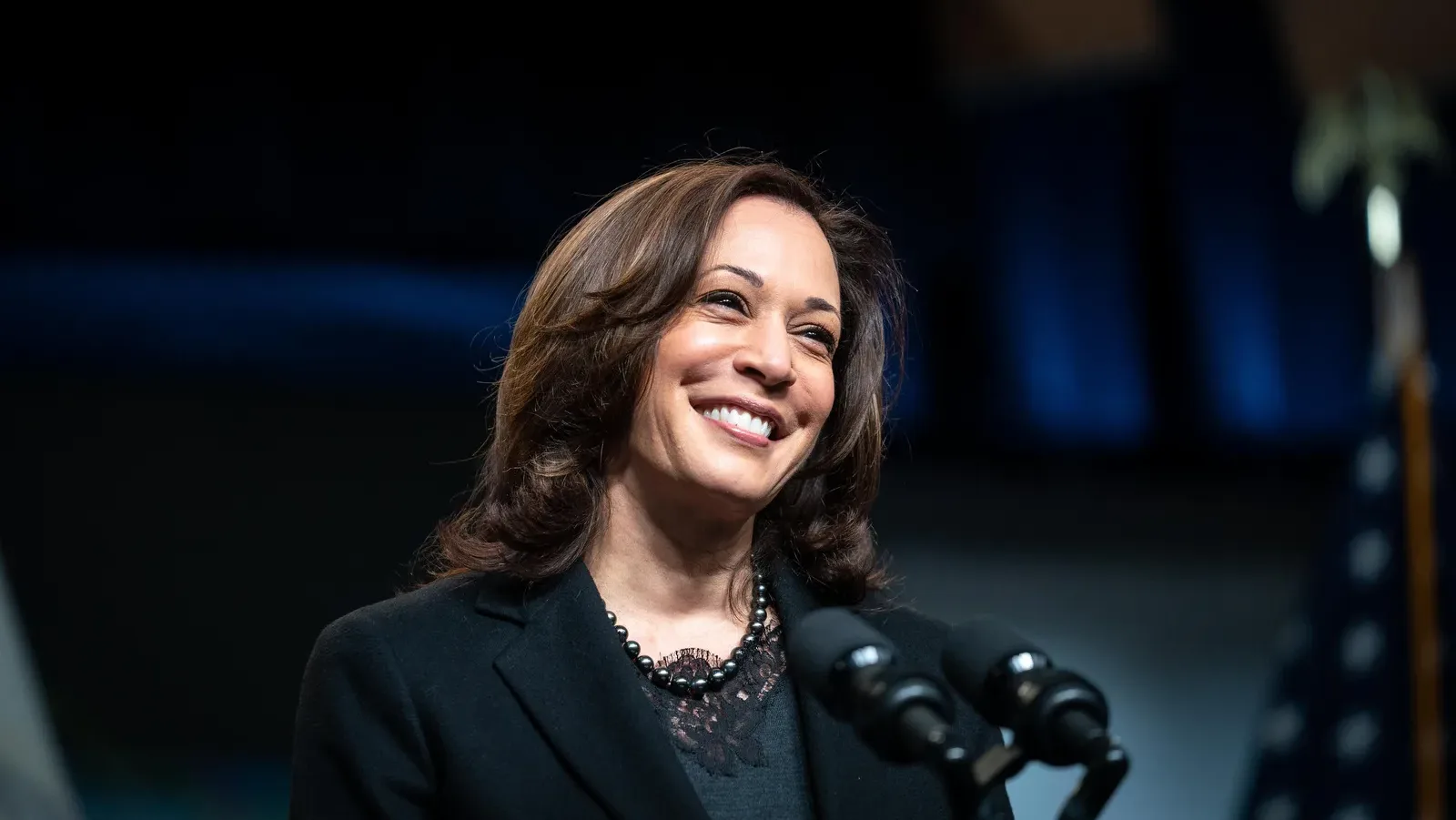Kiana Danielson was just six years old when she fell in love with the sport of hockey. As a child growing up on Vancouver Island in British Columbia, Canada, Danielson’s parents would take her and her sister to a local rink to play. Each time she picked up a hockey stick, her love for the sport grew even more.
“I like the competitiveness and I’m really passionate about hockey,” says Danielson. “I feel like coming to the rink and just putting all my focus onto the ice, the gameplay, and I don’t have to think about anything else. I just enjoy it. It’s a lot of fun.”
Danielson just finished her first year of college at Ontario Tech University, where she plays forward for the school’s hockey team. And now the 18-year-old is also showing off her skills on the ice while representing her Jamaican heritage as a member of the New York-based Caribbean Community Ice Hockey team.
“I feel like this is a really good opportunity to play for your culture,” she says. “The diversity amongst everyone, seeing different cultures compete against each other — it’s a really cool opportunity, and it’s pretty special to be part of it.”
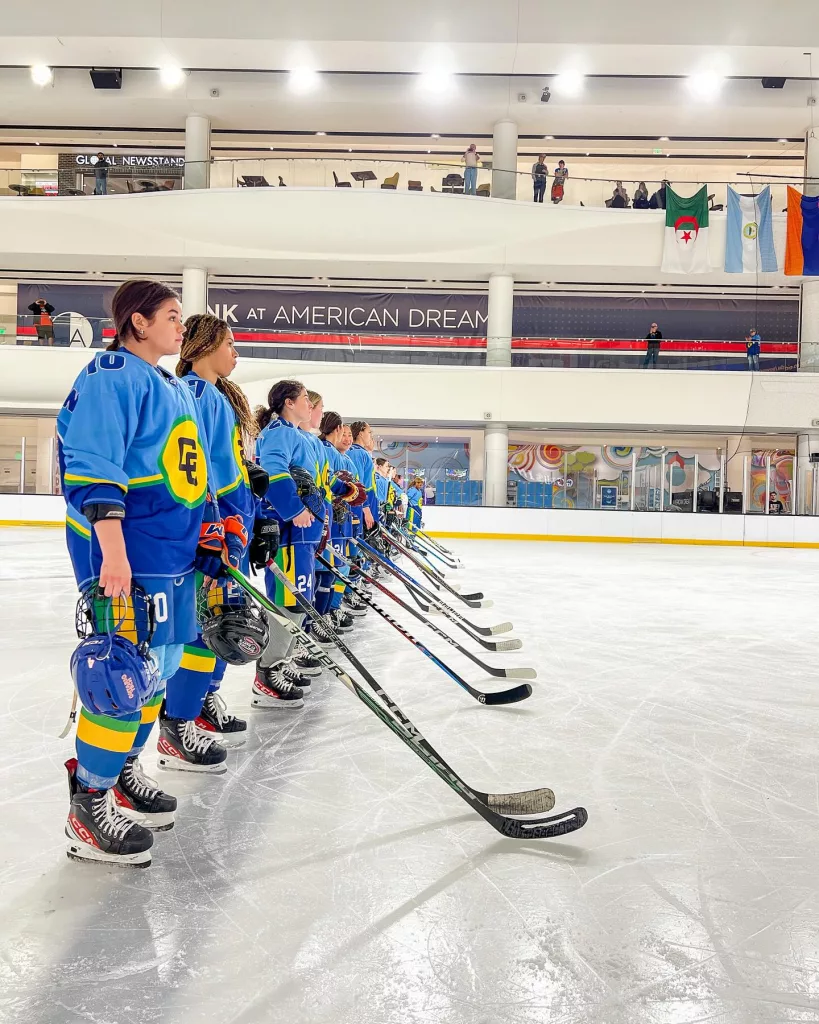
Caribbean Community Ice Hockey has nearly 100 men, women, and kids who have voluntarily registered to be a part of the team. To join, prospective candidates must complete an interest application and submit video proof of their skills. With members from various Caribbean nations including Jamaica, Haiti, St. Lucia and Guyana, players proudly represent their culture every time they hit the ice.
Last year, the women’s team took the number one spot in the 2023 Amerigol Latam Cup, an international ice hockey tournament uniting non-traditional hockey markets.
Also Read: South Bronx United Brings Soccer, Study and Legal Help to Undocumented Teens
“It’s fantastic, and it just shows, especially for our first-generation players, that anything is possible,” says Jazmine Miley, whose family is from Puerto Rico. She created Caribbean Community Ice Hockey as a subsidiary under the Hockey Players of Color (HPOC) movement, which she founded in 2020 as a way to promote and support players of color taking part in a traditionally white, male-dominated sport.
“I wanted to create an organization that was not only just a community, but a family for those who don’t feel like a family on their own teams,” says Miley. “It’s very noticeable that a lot of kids are one or two minorities on a team.”
Miley started playing hockey at the age of 13. But growing up in Queens, New York, she says she was often viewed as the “crazy Black girl,” which led her to understand the importance of having representation in hockey since it’s not a popular sport within communities of color. Miley says playing college hockey at Finlandia University in Michigan only made her feel worse.
“Especially being that going through college hockey was the most depressing and loneliest time and experience. So I wanted to create something where players do not have to feel alone.”
Caribbean Community Ice Hockey takes representation a step further with players from countries where ice sports are not the norm.

“I’ve actually had a lot of my friends and family reach out and be like, ‘oh my God, you’re playing Team Caribbean. Representation! We love it,’” says Jada Burke, whose family is from Guyana, St. Lucia, and Jamaica. Burke has been playing hockey for more than 20 years, picking up a hockey stick for the first time when she was only three years old.
Also Read: Immigrant Children In Queens Find Community at 5 Star Soccer Academy
“I played division hockey in the States for four years and then at the University of Calgary for one year, and I was like, maybe I need to continue on this hockey journey.”
Making her debut with Caribbean Community Ice Hockey in 2024, Burke plays forward for the women’s team. Her performance during the Dream Nations Cup Tournament held at the American Dream Mall in April helped them earn second place, proof of the sport’s growth.
“I was one of 12 (people of color) for the whole NCAA when I was playing there in my freshman year,” said Burke. “I like that there’s a lot more opportunity now.” But although hockey has become more inclusive, it is not without its challenges. Kianna Saillant, who plays forward for Caribbean Community Ice Hockey and represents Haiti, started playing the sport when she was five. Saillant says at one point, she wanted to quit.
“Just like people not understanding cultural music, language, and not being able to relate to anybody on your team with issues when you felt like people were saying microaggressions made it feel super isolating,” says Saillant. So for her, being a part of Caribbean Community Ice Hockey is special.
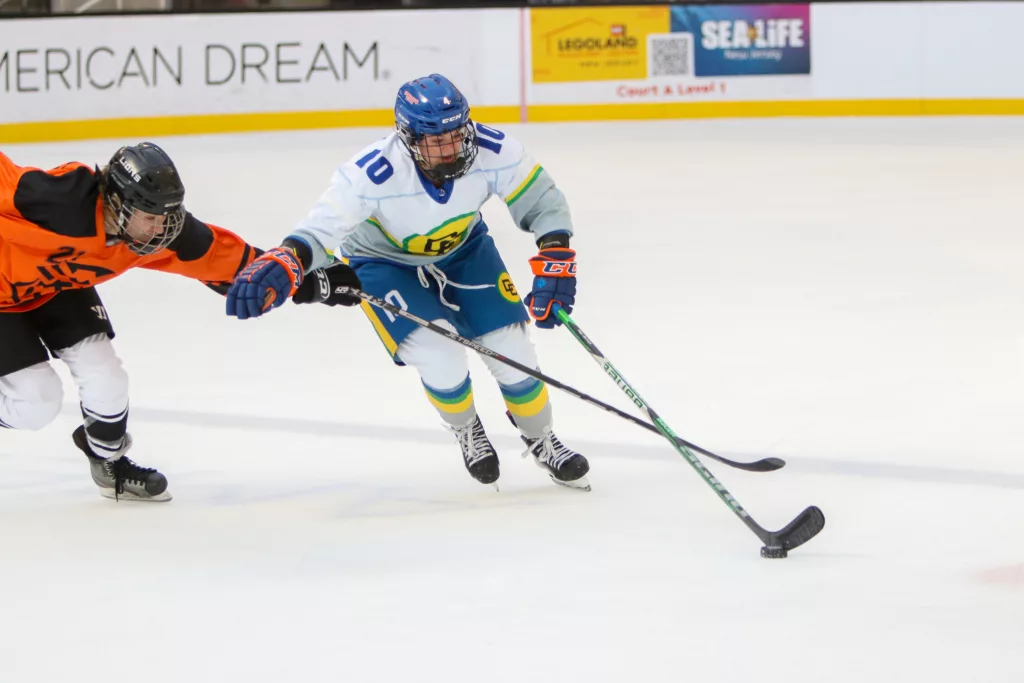
“It’s really exciting and I see it as like a sense of networking and making more friends that maybe you’ll play against in your college career that are people of color,” says Saillant. “You kind of have each other to look out for each other, to talk about experiences, and it’s really just a nice outlet where we get to come together and play fun hockey.”
Juliana Rodgers feels honored to be a part of Caribbean Community Ice Hockey. Rodgers, who also plays for the Puerto Rican national hockey team along with Miley, sees it as an opportunity to encourage other girls and women interested in the sport to pursue their dreams.
TestPost3
“Just helping out the younger generation of Puerto Rican hockey players has been great,” says Rodgers. “Just forming something that’s going to last forever.”
And for Miley, who spent four years playing professional hockey overseas in Hungary, Norway, Finland, and France, creating a space for the Caribbean community is one of her greatest rewards.
“I want everybody to have that opportunity,” says Miley. “I understand that I’m in a position where I can help someone and that’s what I love to do. I take a lot of pride in knowing that I helped them and seeing them shine in their own way.”
In May, Caribbean Community Ice Hockey will be taking their talents to Madrid, Spain, to compete in the 2024 Hispanic Cup. The team will also be returning to the Amerigol Latam Cup this summer.
